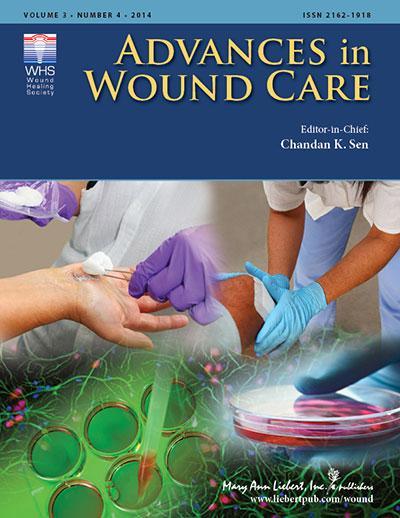New Rochelle, NY, April 10, 2014—In early fetal development, skin wounds undergo regeneration and healing without scar formation. This mechanism of wound healing later disappears, but by studying the fetal stem cells capable of this scarless wound healing, researchers may be able to apply these mechanisms to develop cell-based approaches able to minimize scarring in adult wounds, as described in a Critical Review article published in Advances in Wound Care, a monthly publication from Mary Ann Liebert, Inc., publishers and an Official Journal of the Wound Healing Society. The article is available free on the Advances in Wound Care website.
Michael Longaker, Peter Lorenz, and co-authors from Stanford University School of Medicine and John A. Burns School of Medicine, University of Hawaii, Honolulu, describe a new stem cell that has been identified in fetal skin and blood that may have a role in scarless wound healing. In the article "The Role of Stem Cells During Scarless Skin Wound Healing", the authors propose future directions for research to characterize the differences in wound healing mechanisms between fetal and adult skin-specific stem cells.

Advances in Wound Care, an Official Journal of the Wound Healing Society, is published monthly in print and online. For more information, visit www.liebertpub.com/wound.
(Photo Credit: ©2014, Mary Ann Liebert, Inc., publishers)
"This work comes from the pioneers in the field and delineates the opportunities towards scarless healing in adults," says Editor-in-Chief Chandan K. Sen, PhD, Professor of Surgery and Director of the Comprehensive Wound Center and the Center for Regenerative Medicine and Cell-Based Therapies at The Ohio State University Wexner Medical Center, Columbus, OH.